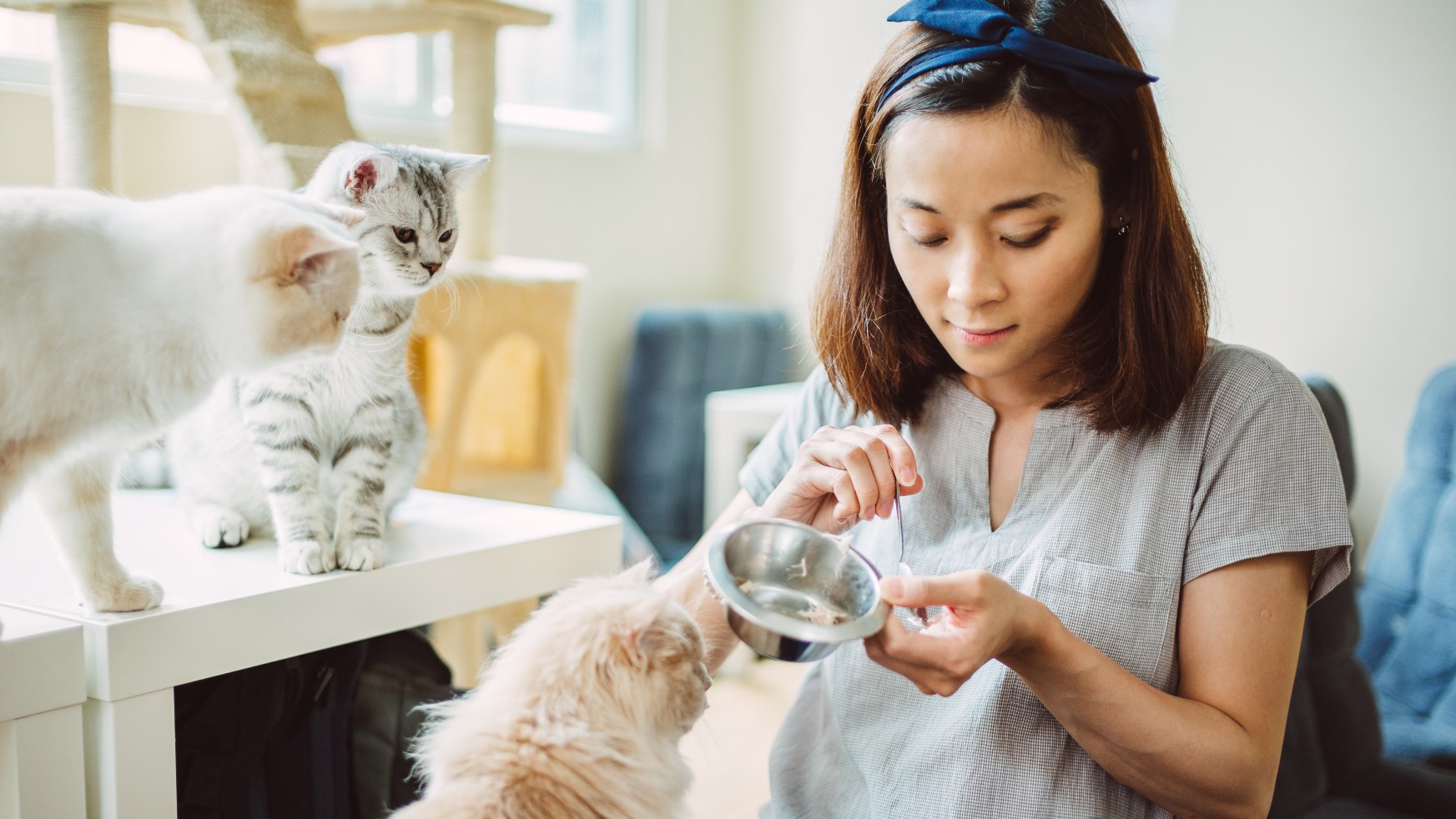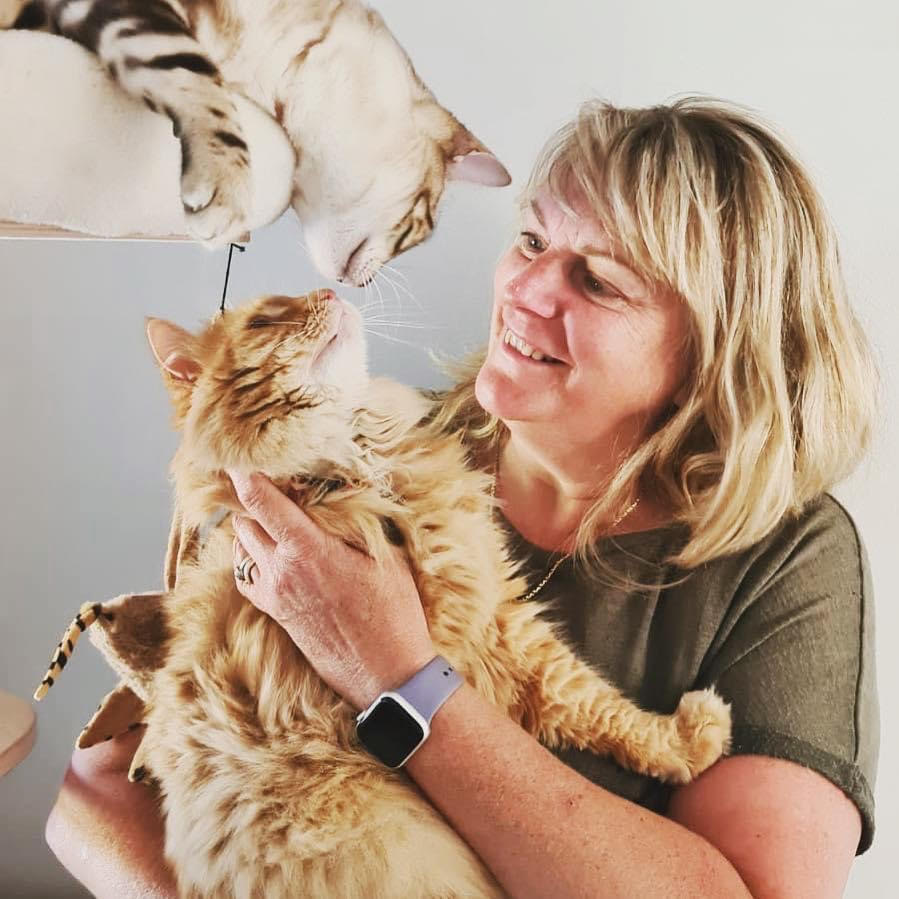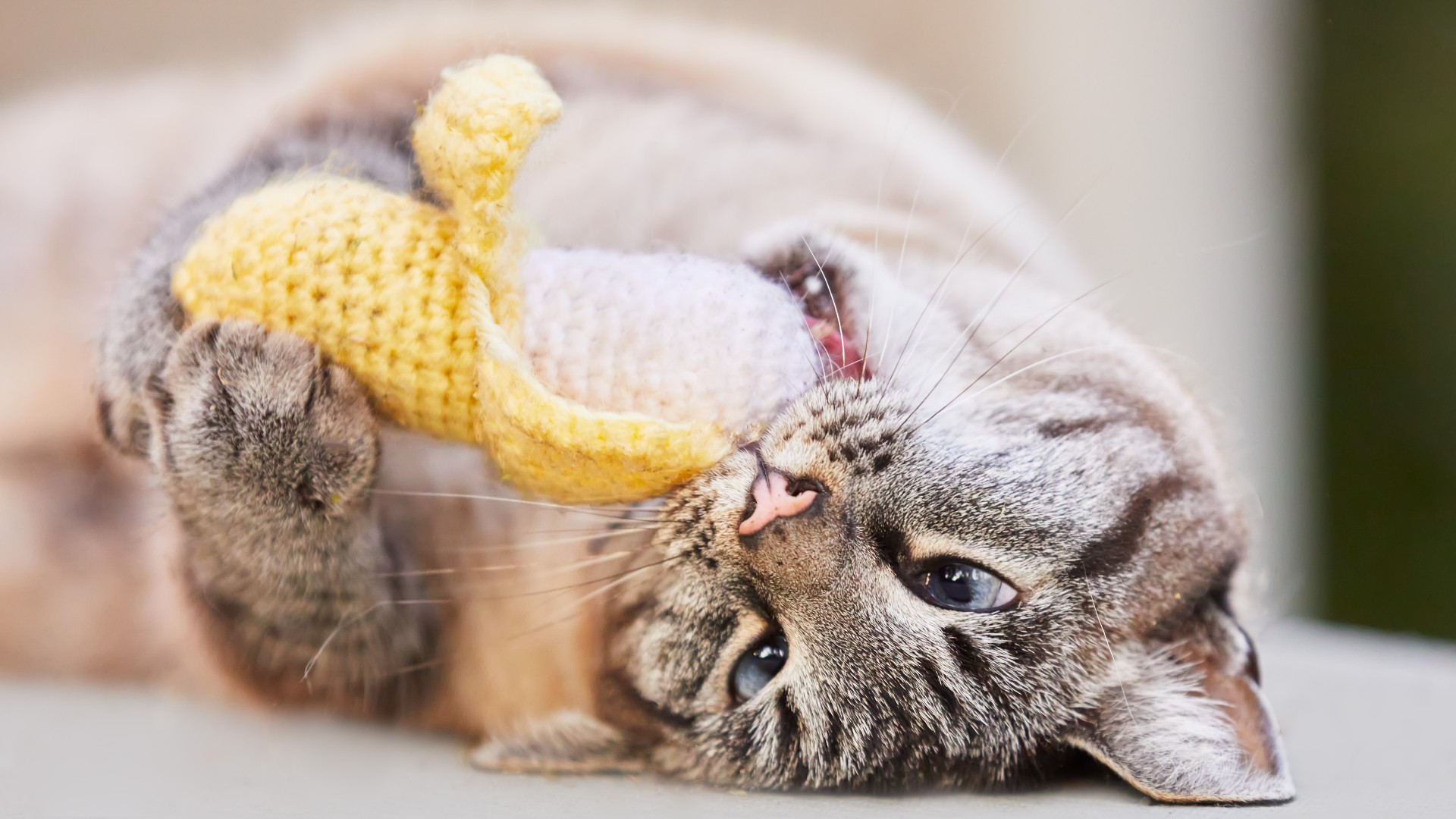How to keep the peace in a multi-cat household
Host to a multi-cat household? Here’s how to ease tensions and ensure that your cats coexist in harmony

Living in a multi-cat household isn't always easy. While it can be wonderful having several feline friends in your family, cats are territorial and solitary creatures who largely prefer their own space — which can make for a less than harmonious home life!
Although some cats do enjoy snuggling up together and truly delight in each others company, others may find co-living situations stressful. In fact, the anxiety triggered by living in a multi-cat household may lead to a cat not eating or it may result in cats sustaining physical injuries due to fighting.
"Not every cat wants to live in a social environment with other cats," explains behaviorist Amanda Campion. "It's important as cat caregivers we recognise and understand how we can support our cats in a multi-cat home."
Whether you already have multiple moggies, or are thinking about adding a new bundle of fluff to your cat collection, there’s a lot more to think about than simply investing in the best cat toys when it comes to ensuring that all of your cats are happy, healthy, and comfortable. Let's take a look...

Amanda is an Association of Pet Behaviour Counsellors (APBC) and the Animal Behaviour and Training Council (ABTC) Registered Clinical Animal Behaviourist. She specializes in everything feline from welfare, behavior and education offering support and guidance to new cat parents with her “kitten kindergarten” and “happy cat” online courses.
Provide plenty of hideaways
Did I already mention that cats like their own space?! I keep repeating it, because it’s true, and very necessary when dealing with the tricky multi-cat household equilibrium.
Even in single-cat households, cats like having somewhere to hide when they’re nervous or simply want to be left alone. This is doubly (or triply!) important when it comes to multiple cats in one house. If you were living in a house full of other people, you would also want your own bedroom to retreat to. Needing several hiding spots doesn’t necessarily mean that your cat is unhappy — they probably just need some time out from other cats and humans.
Alongside these hiding spots, you should provide multiple high resting places for your cat or cats. When a cat feels threatened, or just wants to observe their surroundings, they often seek out a high place to look down from. These can include cat trees and perches, wardrobes, cupboards and shelves. Make sure that there’s enough of these that your cats don’t feel the need to fight over them — the whole point of hiding spots and high places is to give your cats the space to be calm.
Get the best advice, tips and top tech for your beloved Pets
Cat behaviorist Campion discussed this, saying, “We can do this by ensuring there are plenty of resources available. For example one litter tray per cat plus one extra and numerous water stations and feeding stations (remember not to place water next to food). There will be places in your home that are regarded as “high value” resources by your cats, for example, your bed or a tall cat tower.
“In order to prevent discord in the home it is important to ensure that each cat has its own safe space and high value area to avoid resource conflict (see our guide to food aggression in cats for more on this) and jealousy…. Yes, cats are capable of feeling this emotion too!”
Give your cat their own items

Just like with the hideaways, cats are not often keen on sharing things. From water bowls to litter trays/boxes, cats like the option to have their own.
There’s a great rule of thumb to go by when deciding how many of each thing you should get for your multi-cat household, and that is ‘one each plus one extra’. That means that your cat always has their own personal space and stuff, and also has the option to choose which they like — this is always a good idea with cats, as they are often very particular about what they fancy, and this can vary day by day.
One each plus one extra gives your cats the opportunity to spread out as much as they’d like, avoiding tense situations where all the cats are in the same area. It’s not a bad idea to create variation in the options as well, to give your cats some enrichment. One example of this is to provide different types of bedding. Check out our guides to the best cat beds and DIY cat beds if you're in need of some inspiration.
Campion reiterated this need for each cat to have their own feeding bowl, she said, “Cats should be fed away from each other to prevent hostilities and guarding at feed time. For big cats, feed time is a solo activity, and our little house tigers inherit a lot of their innate behavior from their big cat cousins.”
Spend time with each cat

One big reality about pet ownership is that it’s a huge responsibility to care for the wellbeing of another creature. Each pet you take on is just as deserving of your time, attention, and care as the next. If you don’t feel like you have the time to provide your cats with regular health checks, enrichment, and attention in whichever way suits them daily, at least one daily feed, water changes and litter tray cleaning, then you may have more cats than you can handle.
“Regular solo play sessions in the home are important as there will always be one more confident cat that will steal the limelight at playtime, leaving the less confident ‘wallflower’ cat in the background and not able to engage with the game," says Campion. "Offering play before food taps into the hunt, kill-eat predatory drive and cats do not hunt in packs unlike some of the big cats such as lions, so playtime is definitely a singular activity."
“Remembering to rotate toys in a multicat home is important so that cats don’t get bored. If you see your cats engaging in rough and tumble play, try not to be too alarmed, generally, cats play with retracted claws so although it may seem at times a bit too intense it's all part of the cat language and helps them to bond.
“However, if you feel that the energy level is just a bit too intense be sure to distract one of the cats away from the game or gently try to separate with a soft object placed in between them.”
Each cat you own should be given the attention they deserve, so that you pick up on potential health and behavioural problems quickly, and ensure that they all get any play or petting they need. If you have multiple cats, it could be worth taking note of how much time you’re spending with each one, so that you can make sure they have equal opportunities for affection and attention.
Campion added, “Cats will have a preferred individual in the multi-cat home, you can generally see this cat-cat relationship as cats that sleep together and allogroom. This helps to solidify their bond in the home. You may see there are some cats that just ‘tolerate’ each other too.
“Before adding to your cat family, think first – do you have the space, do you have the time and the finances to support another cat but most importantly does your existing cat want or need company? If you have a resident cat that fights with all the neighboring cats then there is an almost definite probability your cat is so territorial that it will not tolerate another cat in the home.”
Try a diffuser
If your cats have plenty of space, but you are still struggling to create a harmonious household, due to feline personalities or anything else, pheromone diffusers can help to promote calm among your feline friends.
These typically plug into the wall like any other type of diffuser, and they release a scent that mimics the pheromones that cats use to communicate with the world around them. These diffusers physically send a message of calm to your cats, often similar to that which a cat’s mother would release, which helps to relieve stress.
The number one thing to consider with a multi-cat household is your cats’ stress levels. Keeping them all calm and feeling confident and in control of their space is key to minimizing scraps or anxiety in cats.
Want more feline advice? Here's how to be a good cat owner.

After graduating from the University of East Anglia in 2021, Caitlin started her career in veterinary and pet care journalism at Vision Media, working as a staff writer at MRCVSOnline and regularly contributing to PetFocus Magazine. Armed with a lifelong adoration of cats and a passion for improving the standards of care for small pets, Caitlin took the leap into full-time freelancing in early 2023.
Having spent her career thus far writing content for veterinary clinics, covering veterinary congresses and publishing the latest developments in veterinary medicine. With her love for animals, and interest in all things veterinary, Caitlin is keen to educate on and advocate for the best possible standards of pet care.
When she’s not writing pet care articles, Caitlin enjoys spending time with her massive ginger cat named Jake, and rescue hamster named Coffee. She is also a keen poet, and loves petting every cat she sees when out and about.
